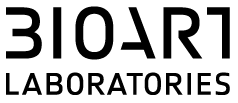Law & New Materials
On the 30th of March BioArt Laboratories organised a futuristic, reflective and professional debate on law and new materials. BioArt Laboratories encourages and facilitates talents to work with new biobased materials and biotechnologies that could lead to interesting innovations and start-ups. Topic of the discussion for the evening was legislation regarding these new materials and particularly intellectual property rights.
Prior to the debate, the mixed audience of professionals and students from different backgrounds and disciplines, was introduced to the broad scope of our topic by four interesting keynote speakers. Bert Pauli, delegate of Economy and Internationalisation, kicked off with a talk about the importance of supporting initiatives that reach out to innovation and bring about new, unexpected connections. Second, from a philosophical perspective, Laurens Landeweerd spoke about the myth of Prometheus and the double-edged sword of technology and money-driven industries. The audience was taken to the year 2026 by our own law-intern Agata Chmiel. She explained the tension between having clear and strict rules on bioengineering and allowing artists and designers extended freedom of expression with more lenient legal boundaries on acquisition of materials for their work. Lastly Jenny Cromsigt gave more detailed information about the purpose of patents and what kinds of things can be patented.
As the audience was well informed and ready for discussion, our debate leader Gijs Weening explained the rules of the dynamic House of Commons-style debate. There were two arm lengths of space between the people arguing for and against the statement that appeared on the screen, so the debate would remain verbal, he joked. Also the audience was allowed to express itself by calling ‘boo’ or stamping on the ground and roaring ‘hear, hear’ during someone’s speech. The discussion on the statements about allowing bio-artist to cross boundaries, and the need for an ethic committee for artists working with living material was exemplary of the many different opinions concerning the (legal) future of biomaterials. The statement about legalising organ trade emphasised the troublesome ambiguity on the legal classification of the human body and unresolved ethical discussions. We clearly need more diversified dialogue on which human parts and living materials could and should be considered as “transferable things” and whether they should be placed within the civil code as a “tangible property”.
Concluding, the debate on “Law and New Materials”, and especially the insightful input of the participants, exceeded the expectations of the organisers. It was entertaining, stimulated vivid discussions, and raised several issues relevant for entrepreneurs, artists, public officials and lawyers. Most importantly, the event shed a light on the potential future of new materials in innovation, a topic on which BioArt Laboratories focuses on an everyday basis.
Many thanks to all participants and supporters of the event!
Read more:
Esther Porcelijn was there to observe and reflect on the event and wrote a story on the spot: http://estherporcelijn.nl/law-materials/
There will be more debates. Stay tuned.
Date
March 30, 2016
Category
Debates



